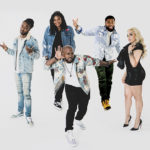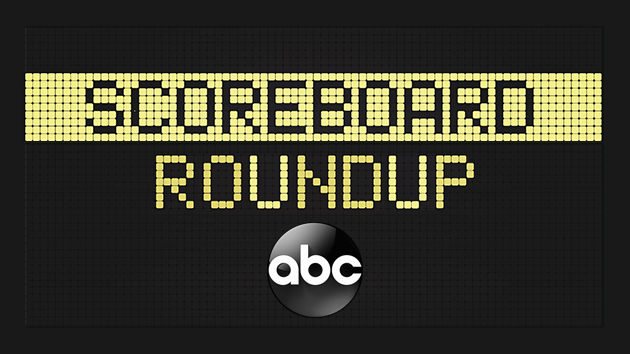Dolphins’ Tua Tagovailoa is not wearing Guardian Cap, and NFL chief medical expert explains why
Written by CBS SPORTS ALL RIGHTS RESERVED on October 26, 2024




Tua Tagovailoa will make his return to game action Sunday, and he’ll be doing so in his normal helmet sans a Guardian Cap.
Tagovailoa has worn what is considered by the NFL to be the top-of-the-market for quarterbacks in terms of reducing head-impact severity. And by opting against the Guardian Cap on top of that, Tagovailoa is forgoing what amounts to redundancy.
Tagovailoa is returning from his third known concussion in his NFL career, and he’ll start against the Cardinals 45 days after suffering that concussion in Week 2 against the Bills. He wears a VICIS ZERO2 MATRIX ID QB helmet, which is a quarterback-specific modification of a VICIS helmet the league has deemed “Guardian Cap optional.”
“For most helmets adding a Guardian Cap, an extra layer of padding, will reduce the force of each blow by somewhere between 10 and 15%,” NFL chief medical doctor Allen Sills tells CBS Sports. “Now there is a subset of helmets that we tagged as Guardian Cap optional. And the reason for that was that those helmets in the laboratory testing showed that there really was not additional benefit of that magnitude by adding a Guardian Cap.
“In other words, the helmet itself was doing as good a job of mitigating the force as a regular helmet plus a guardian cap. So adding a Guardian Cap to those helmets did not show that same 10 to 15% benefit.”
Technically, the VICIS ZERO2-R MATRIX ID is the Guardian Cap optional helmet, and the one Tagovailoa wears is the quarterback modified type that adds padding in the occipital area to better protect a quarterback from more typical blows to the back of the head.
To determine the best performing helmets, scientists test the equipment in labs by mimicking the collisions on the field that involve the types of force, direction and speed seen in professional football. Helmets are then ranked according to their effectiveness at reducing force, and they are compared to the data the league can pull from RFID tags in every player’s helmet to see the rate of force on the field and diagnosed concussion.
“Because we tag every helmet that every player’s wearing, we know exactly the concussion on-field rate for every single helmet, and we can go back and compare that to the lab data,” Sills says. “And so that’s why we have a lot of confidence in that lab data.”
No quarterback, no matter what approved helmet they wear, has worn a Guardian Cap in-game this season, the first in which these devices have been permitted. The Guardian Cap itself adds about 0.8 pounds in weight.
Asked Monday why he wouldn’t wear the extra layer of protection, Tagovailoa said “personal choice.”
Of course, Tagovailoa isn’t just any quarterback. He’s the only quarterback of the past five seasons to enter the concussion protocol at least three separate times. He cleared protocol this week after practicing for the first time since the Dolphins placed him on injured reserve. Clearing protocol after nearly six weeks is just a technicality since he needed to return to practice before getting full clearance, something he couldn’t do while on IR.
Tagovailoa has said he was symptom-free as soon as a day after the concussion. And while declining to speak specifically about Tagovailoa’s case, Dr. Sills did say such reporting is not atypical.
“I would just say that we do see in a substantial number of cases with very transient symptoms after concussion, meaning that many players are asymptomatic by one or two days after an injury,” Sill says. “And I think that reflects the fact that we are very quick to diagnose concussion now in today’s system — meaning that even if someone has very transient symptoms, we’re going to ahead and diagnose them with concussion and put them through that rigorous return to play protocol because we always want to err on the side of being cautious.
“So I think that because we are so conservative, we will have a number of players who quickly become asymptomatic. And that is why that is the group of players that you will usually see that don’t miss a game that will return the following week.”
Studies have shown players with repeat concussions are more susceptible to future concussions and that recovery time can be slower. In Tagovailoa’s case, not one of the doctors or experts he met with over the past month recommended he should retire or could not return to play.
Asked this week what he’d say to fans concerned about him suffering another head injury, Tagovailoa said: “I appreciate your concern. I really do. I love this game. And I love it to the death of me. That’s it.”
Sills and the NFL have been consistent in that any return by Tagovailoa would be a decision between the patient and medical professionals. The league, Sills has said, does not practice medicine.
“I have absolute confidence in the Dolphins medical staff,” Sills says, “that they are being as thorough and conservative as possible, and that they have deployed all of their local as well as internationally renowned resources to provide this player with the very best of care and to make sure that all information is available for decision making.”
The post Dolphins’ Tua Tagovailoa is not wearing Guardian Cap, and NFL chief medical expert explains why first appeared on OKC Sports Radio.







